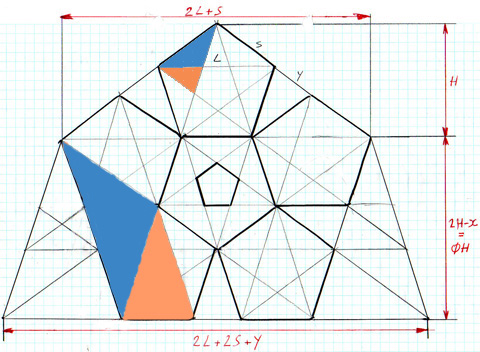Introduction
The Penrose Tiles illustrate that mathematics can indeed be beautiful. The tiles are essentially the two types of triangles that can be found in the Pentagon (coloured blue and orange in the figure below). See how these triangles occur on different scales within the one pentagon. This is because the cross-lines of one pentagon creates a little pentagon within, whose cross-lines in turn creates a smaller one again etc, hinting to an inherent recursive nature.
It can be seen from the figure that the larger triangles can be made up from smaller triangles. In other words, having many copies of just 2 triangle enables you to construct the amazing patterns with what are called, the Penrose tiles. I myself have dabbled a little in this and have come up with, what I believe to be, some creative results.
First I had to come up with a pattern in order to cut out the necessary triangles with efficiency:

Next I needed some equations in order to draw them accurately. The figure below also accentuates the recursive nature within a pentagon with the yellow-red zig-zag line.
Note also the extensive occurance of PHI (Φ) in the equations.
